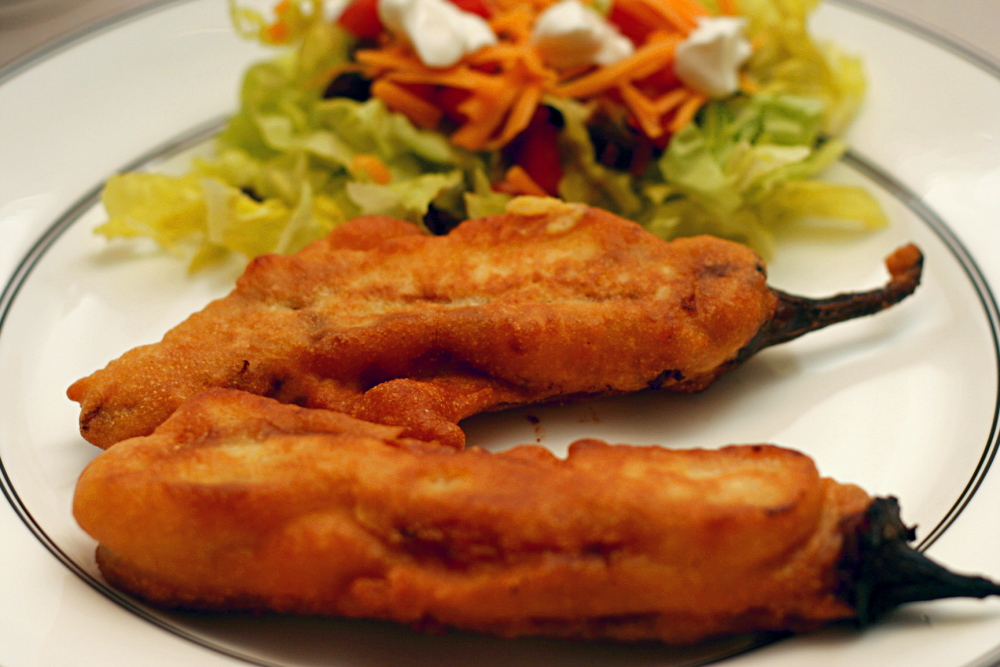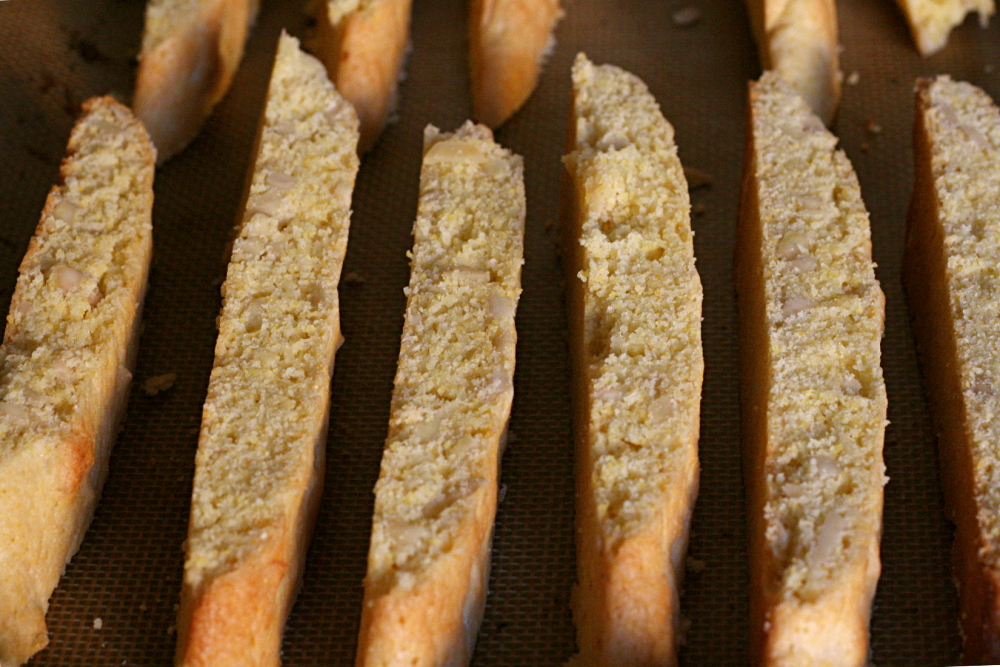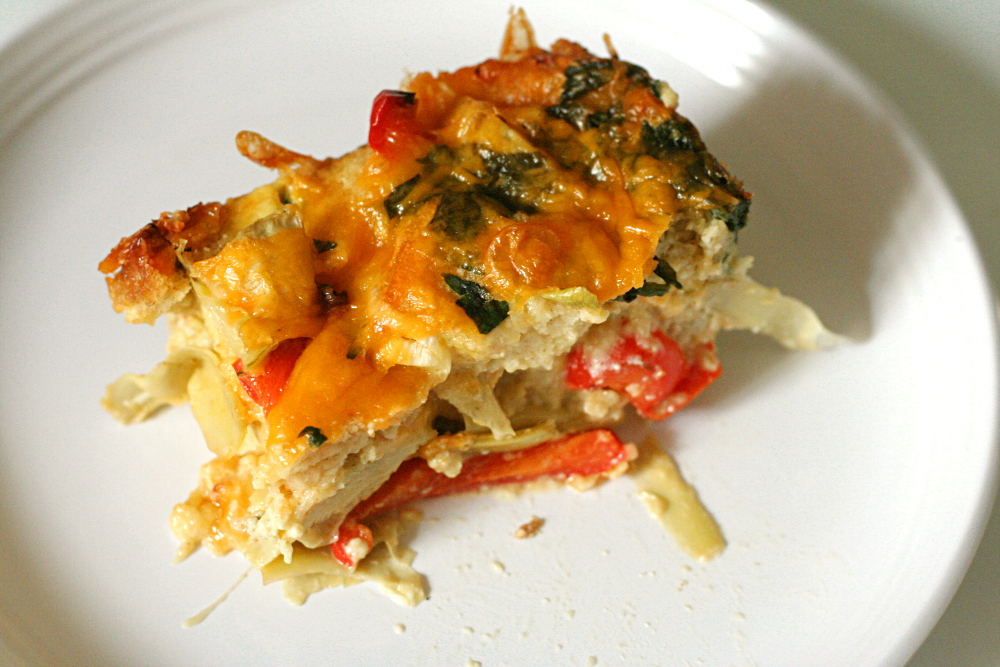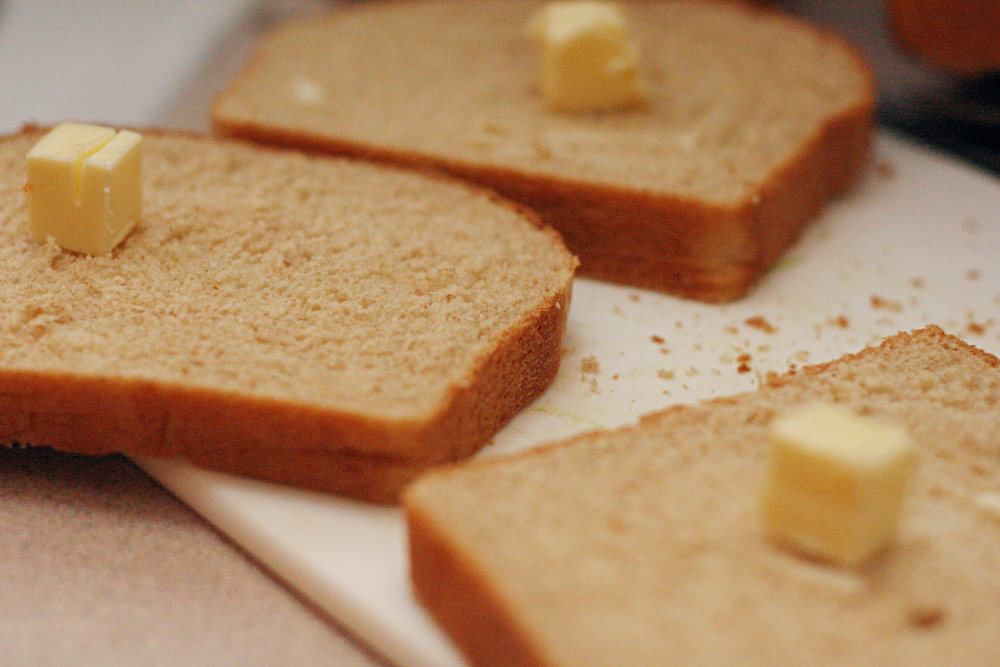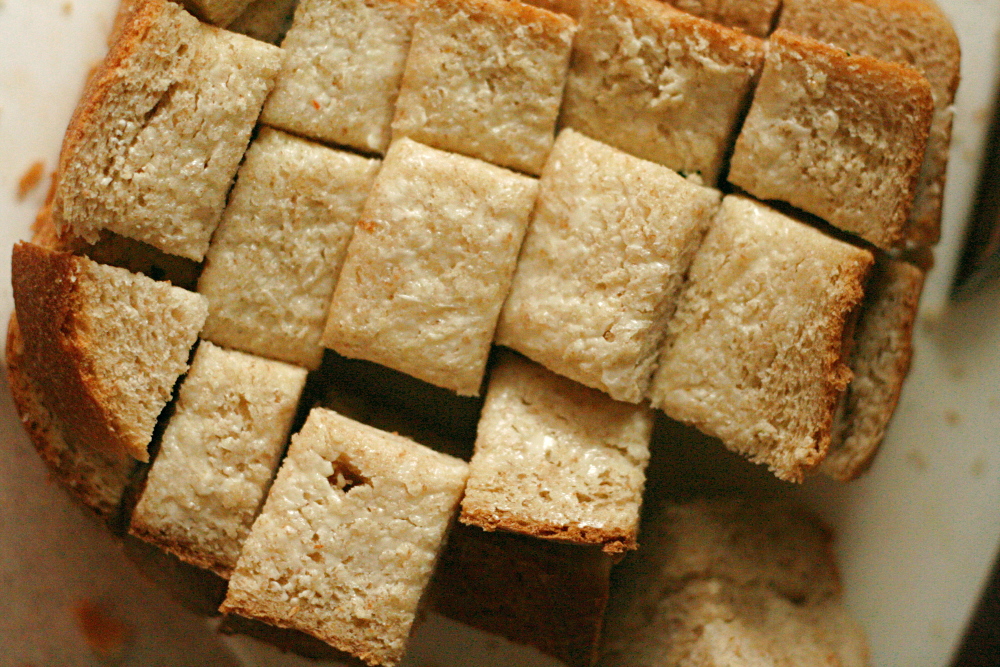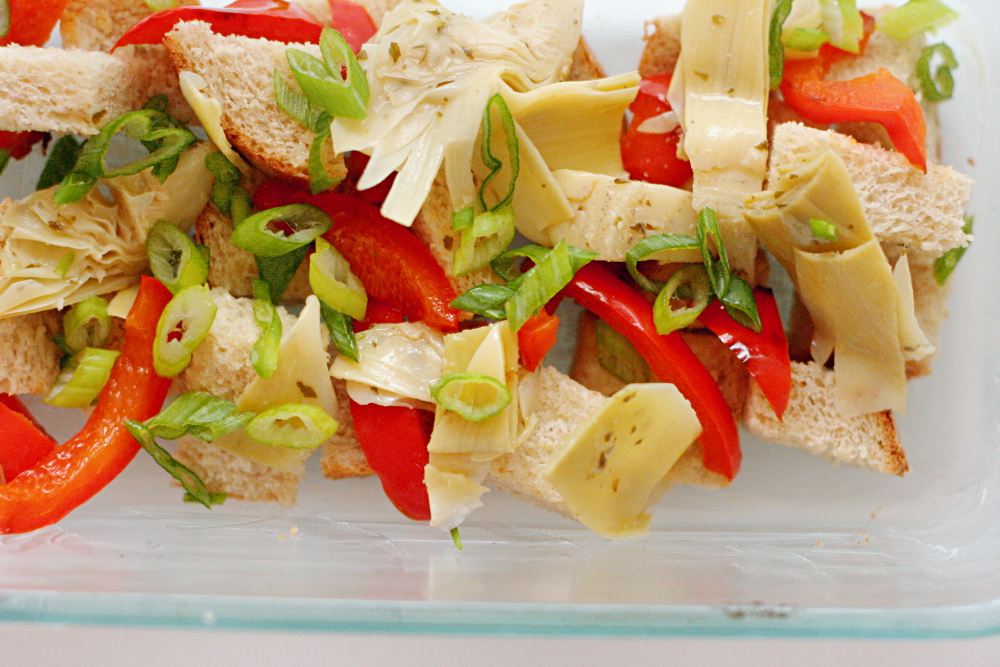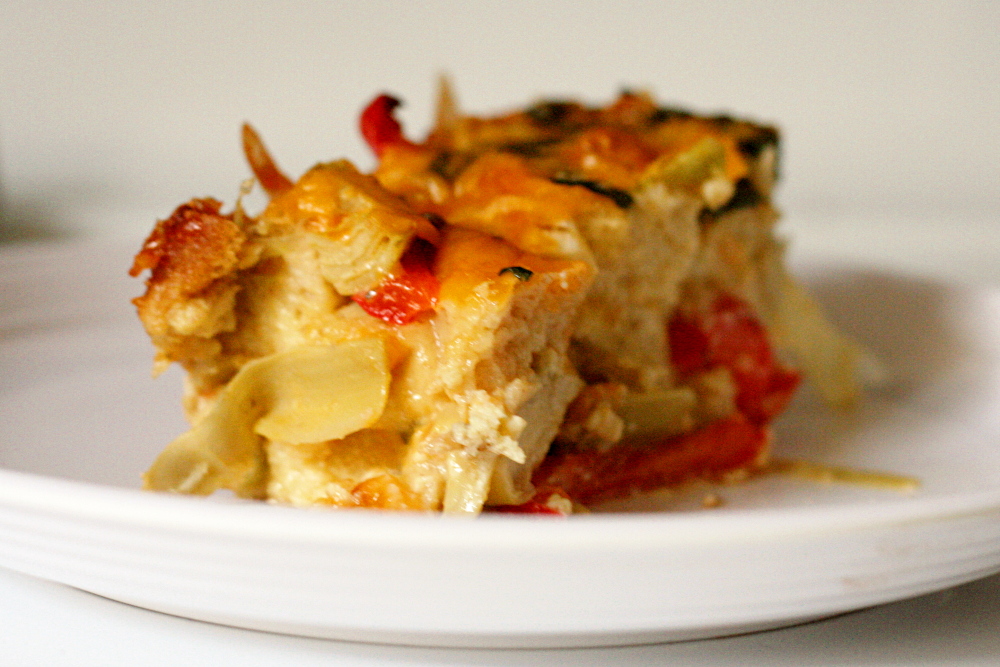This makes two Daring Baker recipes in a row that were already on my mental to-do list. It’s perfect because otherwise who knows when I actually would have gotten around to making them. I would have been making my standard pizza recipe, too lazy to try this new one which I’ve heard great things about, and wondering if mine is as good as it gets.
I’ve been using Cooks Illustrated’s crust recipe for years, which has the same ingredients as Peter Reinhart’s in only slightly different proportions. I started adding some sugar and white wine to it after Deb discussed it, and I found that my crust was a little more light, crisp and bubbly, which I liked.
But the CI recipe hasn’t always been perfect for me. Lately when I try to stretch it out, it has a tendency to rip, even when the dough is warm enough and risen completely. It’s not an elasticity issue either – it’s not like the dough is bouncing back on itself when I try to stretch it out.
One of the keys to Reinhart’s recipe is that he uses very cold water in the dough, then refrigerates the dough immediately after kneading, similar to his pain a l’ancienne. To be honest, I usually do this – albeit somewhat half-assed – with CI’s recipe, just because it’s more convenient for me to make the dough the night before I want it for dinner.
The biggest difference between the two recipes is that Reinhart mixes and kneads his dough with a stand mixer, while CI uses a food processor. Despite the similarity between CI’s and Reinhart’s recipes, their outcomes were relatively distinct. Reinhart’s dough did not rip – it seemed capable of stretching to infinite lengths. Rosa, this month’s host, requested that we take a photo of the dough being tossed and spun, but this dough was so floppy, there’s no way I was going to chance throwing it around the kitchen.
Baked, the pizza wasn’t very different from my normal recipe. In fact, Dave didn’t notice that I had changed it. However, it wasn’t quite as crispy, and it wasn’t substantial enough to hold up my toppings, even though I don’t think I overloaded it. I think I might have gone overboard in making it thin.
I think in the future, I’ll stick with the ingredient proportions from CI’s recipe, adding the the sugar and white wine. However, I’ll use Reinhart’s method of preparing the dough with the stand mixer and using refrigerated ingredients. Hopefully this way I’ll get the best of both worlds. It’ll be a while before I have a chance to try it though, because right now, I have a half recipe of both doughs in my freezer.
Update: At some point I’ll get around to posting my method for making pizza (exact crust instructions, sauce, etc.), but I want to do some refining first. In the meantime, you can find blog entries on Cooks Illustrated’s basic recipe here, here and here.
Basic Pizza Dough (adapted from The Bread Baker’s Apprentice by Peter Reinhart)
Makes 6 pizza crusts, about 9-12 inches/23-30 cm in diameter.
4½ cups flour (bread, high-gluten, or all-purpose), chilled
1¾ teaspoons salt
1 teaspoon instant yeast
¼ cup olive oil or vegetable oil (both optional, but it’s better with)
1¾ cups water, ice cold (40 degrees)
1 tablespoon sugar
cornmeal for dusting
1. Mix together the flour, salt and instant yeast in a big bowl or stand mixer. Add the oil, sugar and cold water and mix well (spoon or paddle attachment) to form a sticky ball of dough. On a clean surface, knead for about 5-7 minutes, until the dough is smooth. If it is too wet, add a little flour and if it is too dry add 1 or 2 teaspoons extra water. If you are using an electric mixer, switch to the dough hook and mix on medium speed for the same amount of time. The dough should clear the sides of the bowl but stick to the bottom of the bowl. If the dough is too wet, sprinkle in a little more flour. If it clears the bottom of the bowl, dribble in a teaspoon or two of cold water. The finished dough should be springy, elastic, and sticky, not just tacky, and register 50°-55° F/10°-13° C.
2. Flour a work surface or counter. Line a jelly pan with baking paper/parchment. Lightly oil the paper. Cut the dough into 4-6 equal pieces. Sprinkle some flour over the dough. Make sure your hands are dry and then flour them. Gently round each piece into a ball. Transfer the dough balls to the lined jelly pan and mist them generously with spray oil and cover with plastic wrap.
3. Put the pan into the refrigerator and let the dough rest overnight or for up to thee days. NOTE: You can store the dough balls in a freezer bag if you want to save some of the dough for any future baking. In that case, pour some oil (a few tablespooons only) in a medium bowl and dip each dough ball into the oil, so that it is completely covered in oil. Then put each ball into a separate bag. Store the bags in the freezer for no longer than 3 months. The day before you plan to make pizza, remember to transfer the dough balls from the freezer to the refrigerator.
4. On the day you plan to eat pizza, exactly 2 hours before you make it, remove the desired number of dough balls from the refrigerator. Dust the counter with flour and spray lightly with oil. Press the dough into disks about 1/2 inch/1.3 cm thick and 5 inches/12.7 cm in diameter. Sprinkle with flour and mist with oil. Loosely cover the dough rounds with plastic wrap and then allow to rest for 2 hours.
5. At least 45 minutes before making the pizza, place a baking stone on the lower third of the oven. Preheat the oven as hot as possible (500° F/260° C). If you do not have a baking stone, then use the back of a jelly pan. Do not preheat the pan.
6. Generously sprinkle the back of a jelly pan with semolina/durum flour or cornmeal. Take 1 piece and lay the dough across your fists in a very delicate way and carefully stretch it by bouncing it in a circular motion on your hands, and by giving it a little stretch with each bounce. Once the dough has expanded outward, move to a full toss. Make only one pizza at a time. During the tossing process, if the dough tends to stick to your hands, lay it down on the floured counter and reflour your hands, then continue the tossing and shaping. In case you would be having trouble tossing the dough or if the dough never wants to expand and always springs back, let it rest for approximately 5-20 minutes in order for the gluten to relax fully,then try again.You can also resort to using a rolling pin.
7. When the dough has the shape you want, place it on the back of the jelly pan, making sure there is enough semolina/durum flour or cornmeal to allow it to slide and not stick to the pan. Lightly top it with sweet or savory toppings of your choice.
8. Slide the garnished pizza onto the stone in the oven or bake directly on the jelly pan. Close the door and bake for about 5-8 minutes.



























